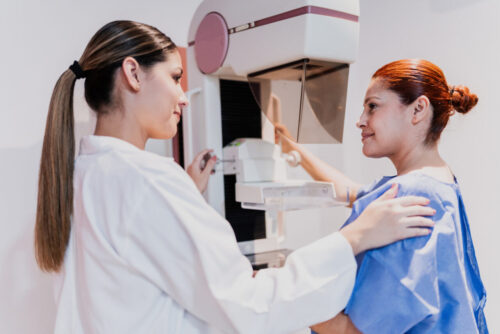
Boston Medical Center
Addressing poverty is not only a compelling financial decision for health systems, but a moral and ethical one.
In 2021, I was the lead author on a paper coining the term “antipoverty medicine.” Our thought was that because of the strong evidence that poverty affects biology, it’s vital to treat it as a true medical concern. As we wrote, poverty is a grave threat to children’s health.
Though that was only a year ago, our concept of antipoverty medicine has advanced as we continue to address poverty in children.
Antipoverty medicine is the idea that we can more effectively help patients be healthy if we incorporate into the full spectrum of care the lens of an intent to relieve poverty, to break the link between a lack of resources and adverse health outcomes. The concept shifts traditional healthcare’s approach, recognizing poverty as a medical issue that requires “treatment,” the same as managing any other health risk.
In practice, every time we interact with a patient, we think not just about the health complaints in front of us, but of the patient’s financial situation and how that could be affecting their health and wellbeing. A classic example is not having an inhaler to treat your asthma because you can’t afford it and, therefore, making your condition worse. That’s really what’s driving your asthma exacerbation: the lack of money. So, really, the treatment is to make sure the patient can afford an inhaler, as opposed to lecturing them about not using an inhaler.
And though the framing is poverty, that’s not always just money. There are other social factors that influence health and available resources, including racism and environmental factors.
Over the past decide or two, health systems have focused on addressing social determinants of health. It’s been a process of screening and referring. Antipoverty medicine is that next step, it goes further upstream. It understands that people have social needs — they may need assistance with food or housing because they don’t have enough money. So, it asks the question, “Why aren’t we addressing that direct issue?” It’s a more empowering approach.
“If we really want to improve health, we have to look beyond our ability to just prescribe medications and do treatments in the hospital; we have to look at the larger financial context of our patients’ lives.”
As Bob Vinci, MD, chief of Pediatrics at Boston Medical Center, told Health Affairs, “‘Social determinants of health’ is an identifier, and antipoverty medicine is a response.”
The important thing to incorporate in practice of an antipoverty medicine clinic is taking a strength-based approach, moving away from screening and toward offering financial resources that we know are available and underutilized that our patients are eligible for, without requiring them to disclose their financial status or lack of resources. Instead, these offerings are just the standard of care. It helps avoid stigmatization and shame.
Examples of antipoverty medicine in action
StreetCred is a hospital-based program in Boston Medical Center’s Pediatrics department that aims to build wealth for its patients in an effort to improve health. It originated as a tax preparation clinic, but we have evolved to do more longitudinal work with a bundle of services. We have a team of financial navigators who meet with parents at each visit in their child’s first year of life, which totals at least seven visits.
In StreetCred, we focus on offering programs that have capacity, are underutilized, and have either cash value or asset-building potential.
When it comes to cash-value programs, we help with tax credits and food-assistance programs like WIC and SNAP. In the last few years, we have added paid family medical leave — which has a very complicated enrollment process. Unfortunately, I have a lot of patients who have quit their jobs during pregnancy because they are struggling with health and don’t realize they are entitled to paid medical leave. Beyond immediate financial value, it keeps people employed and, therefore, more economically stable over the long term.
The two specific asset-building tools we are most focused on offering to patients are 529 college savings accounts and Family Self-Sufficiency (FSS) from the U.S. Department of Housing and Urban Development, which is specifically designed for families who are in Section 8 or federally subsidized housing.
With StreetCred, we’re trying to build a cohort of people over time so we can understand how getting this intervention impacts their healthcare utilization and their health.
Why should health systems adopt the antipoverty medicine approach?
Practically, we know that it’s expensive to be poor — not just for our patients, but also for healthcare systems. In theory, practicing antipoverty medicine should save health systems money by addressing the furthest upstream drivers of poor health outcomes. Hopefully, over the long term, we’ll have the data to show that clearly.
Ethically, if we are in medicine to try to help people be healthier, we know that access to healthcare itself only affects a small percentage of health. So, if we really want to improve health, we have to look beyond our ability to just prescribe medications and do treatments in the hospital; we have to look at the larger financial context of our patients’ lives. And improving health is why we as providers are in this work.


